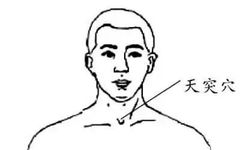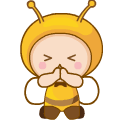
Drink Honey | Three spoonfuls of honey every day, still missing one you.
– JI An Tang –
Regarding “phlegm”, the concept in Traditional Chinese Medicine (TCM) differs from that in Western medicine. Western medicine considers phlegm to be a secretion of the respiratory tract, and healthy individuals generally do not have phlegm.
In TCM, phlegm is divided into tangible phlegm and intangible phlegm. Tangible phlegm aligns with the Western concept; however, intangible phlegm, in TCM, is a metabolic product that can rise to the top or descend to the feet, residing within the organs and remaining on the skin, potentially leading to various diseases. Thus, TCM has sayings like “strange diseases are all attributed to phlegm” and “all diseases arise from phlegm disturbances”.
There is a saying in TCM, “All diseases are caused by phlegm”. So what is phlegm? Is it the phlegm we usually spit out? In TCM, the phlegm that can be spat out is tangible phlegm, while lumps, swellings, and nodules that can be felt in the body are also referred to as tangible phlegm.
“Intangible phlegm” accumulates in the organs and meridians, easily causing various diseases such as cardiovascular issues. Since it is not visible externally, it can only be diagnosed through symptoms, hence it is called intangible phlegm.
Phlegm in the lungs leads to cough and wheezing; in the neck, it can cause goiters and nodules; in the throat, it can lead to plum pit qi; if it rises, it can cause dizziness and palpitations; if it obstructs the heart orifices, it can lead to mania; if it flows to the limbs, it can cause numbness; and if phlegm and blood stasis obstruct the meridians, it can lead to speech difficulties and hemiplegia. A primary sign of phlegm in the body is a thick and greasy tongue coating, along with a slippery pulse, indicating the presence of phlegm.
Where does phlegm come from? TCM believes that phlegm is a product of dysfunction in the body’s fluid metabolism, closely related to the lungs, spleen, and kidneys, with the spleen being the most significant.
TCM states, “The spleen is the source of phlegm, the lungs are the storage for phlegm, and the kidneys are the foundation for phlegm production.” The lungs govern the regulation of qi; if the lungs fail to disperse and descend, and the fluids are not transformed, phlegm can accumulate; the spleen governs transportation and transformation; if the spleen and stomach are damaged, and the transportation is impaired, water and dampness can stagnate, leading to phlegm; the kidneys control opening and closing; if kidney yang is insufficient, the opening and closing are not effective, and water and dampness can rise, also leading to phlegm.
Some practitioners clearly state that the essence of phlegm is water. As Zhang Jingyue said: “The excessive phlegm in a person is due to deficiency in the middle, as phlegm is indeed water. Its root is in the kidneys, and its manifestation is in the spleen. In the kidneys, it is because water does not return to its source, and water overflows to become phlegm; in the spleen, it is due to food not being digested, and the earth cannot control water.”
Where does phlegm come from
TCM believes that phlegm is a product of dysfunction in the body’s fluid metabolism, closely related to the lungs, spleen, and kidneys, with the spleen being the most significant. TCM states, “The spleen is the source of phlegm, the lungs are the storage for phlegm, and the kidneys are the foundation for phlegm production.”
The spleen is the source of phlegm
The spleen governs health and transportation, and is the intermediary in fluid metabolism. Clinically, the spleen is most vulnerable to obstruction, either by qi stagnation or dampness. If the spleen is deficient and its function is impaired, water and dampness can stagnate, leading to phlegm. Phlegm produced by the spleen is typically white, thick, and easy to expel without much effort, often referred to as damp phlegm cough, rather than simply cough.
The lungs are the storage for phlegm
In TCM, it is often said that the lungs are the storage for phlegm, as the lungs govern respiration and regulate the entry and exit of qi. The lung qi connects to the heavens and is a delicate organ, easily affected by external invasions, leading to the accumulation of fluids into phlegm.
The kidneys are the foundation for phlegm
Because spleen yang is rooted in kidney yang, sufficient kidney yang is fundamental for strong spleen yang. Strong spleen yang is the basis for the preservation of righteous qi, and the preservation of righteous qi ensures that evil cannot invade. Therefore, while strengthening spleen yang, one must also consider whether there is a deficiency of kidney yang, and appropriately include warming and tonifying kidney yang herbs, such as Fu Zi (Aconite), Rou Gui (Cinnamon), Xi Xin (Asarum), Yin Yang Huo (Epimedium), and Wu Zhu Yu (Evodia).
Phlegm color differentiation
In TCM, phlegm is classified into cold phlegm, wind phlegm, heat phlegm, damp phlegm, and dry phlegm.
Cold phlegm
Phlegm appears white. It is caused by cold pathogens invading the lungs, causing the fluids in the lungs to congeal into phlegm. Patients are sensitive to cold and prefer warm drinks, with a thin white or greasy tongue coating.
Wind phlegm
Initially, phlegm is white and thin. It is caused by wind pathogens attacking the lungs, known as “wind-cold”. Patients are sensitive to wind, have a scratchy throat, and a white tongue coating.
Heat phlegm
It appears as yellow, sticky phlegm. It is caused by heat pathogens invading the lungs or by first being affected by wind or cold pathogens, which then transform into heat, damaging the fluids and turning them into phlegm. Patients are sensitive to heat and prefer cool drinks, with a red tongue and yellow coating.
Damp phlegm
Phlegm is white and watery, with a large volume and easy to expel. It is caused by damp pathogens invading the body (such as prolonged exposure to a damp environment), impairing lung and spleen function or irregular diet, leading to disordered transportation. Patients may experience heaviness, fatigue, or loose stools, with a thin white or greasy tongue coating.
Dry phlegm
Phlegm is thick and difficult to expel or may contain blood. It is caused by prolonged dry climates or dry pathogens invading the lungs. Patients may feel dryness in the mouth, nose, and throat, with a thin yellow tongue coating.
In addition to these types of phlegm, special attention should be paid to phlegm that contains blood! Blood-streaked phlegm may indicate pneumonia, tuberculosis, bronchiectasis, lung cancer, heart failure, blood disorders, etc., and can also be caused by gingivitis or periodontitis. If blood-streaked phlegm appears, it must be taken seriously, and medical attention should be sought promptly to identify the cause.
How to properly regulate phlegm in the body
Acupoints for phlegm elimination
Tian Tu (Heavenly Embrace) Point
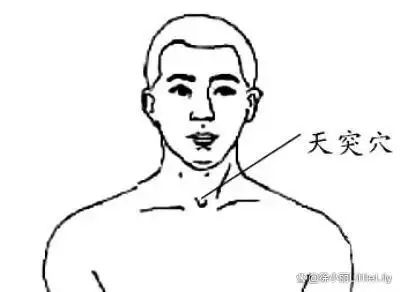
Location: Located in the neck, on the midline, between the two clavicles, at the center of the suprasternal notch.
Method: Press and knead the point with the thumb vertically until a feeling of soreness and swelling is felt; press for 5-8 seconds, 10-20 times.Regulation: This can help eliminate phlegm, open the chest, regulate qi, and descend phlegm, especially suitable for regulating phlegm caused by lung and spleen qi stagnation, where patients often experience restless sleep, gastrointestinal discomfort, and dietary impact.Feng Long (Abundant Dragon) Point
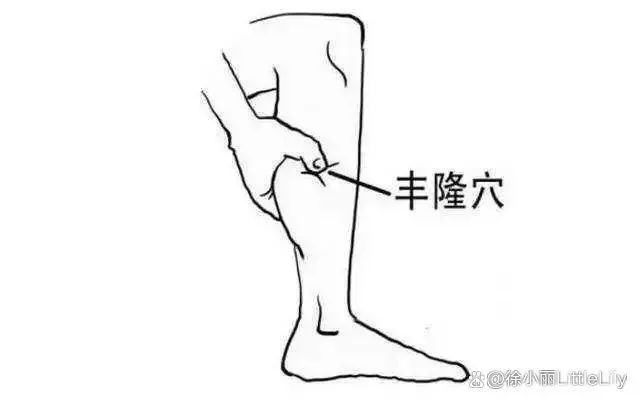
Location: Feng Long is a key point for phlegm transformation, located on the outer side of the leg, find the knee and outer ankle points, connect them to form a line, then take the midpoint of this line, about two finger widths from the anterior edge of the tibia.Method: Use the thumb to press Feng Long for 1 minute, then massage the point in a clockwise direction for 2 minutes, finally rub downwards along Feng Long for 2 minutes.Regulation: Used to treat heat phlegm, damp phlegm, dry phlegm, etc., especially suitable for those who find it difficult to cough up phlegm from the throat; regular massage helps phlegm to be expelled easily.Pulmonary Shu (Lung Back) Point
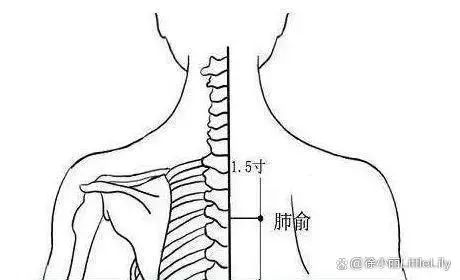
Location: In a sitting or prone position, the Pulmonary Shu point is located on the back, below the spinous process of the third thoracic vertebra, about two finger widths to the sides.Method: The patient lies on the bed, and the practitioner places the thumbs on both sides of the Pulmonary Shu point, gradually applying pressure until a feeling of soreness and swelling is felt. Then, use the palms to press down on the Pulmonary Shu point for 3-5 minutes, once daily.
Regulation: Suitable for various phlegm-related diseases, it can increase lung ventilation, lung capacity, and oxygen consumption, reducing airway resistance, and aiding in phlegm expulsion..
Dietary Therapy for Phlegm Elimination
Chen Pi (Dried Tangerine Peel)

Chen Pi is made from the peel of citrus fruits. After aging, it loses its harsh properties and is skilled at transforming phlegm. Another herb, Ban Xia (Pinellia), is also best when aged.These two herbs combined are known as “Er Chen Tang (Two Aged Decoction)”, a famous formula for phlegm transformation. Chen Pi can usually be used alone as a beverage or cooked with Ban Xia to make a tea, which is beneficial for phlegm elimination.Li (Pear)
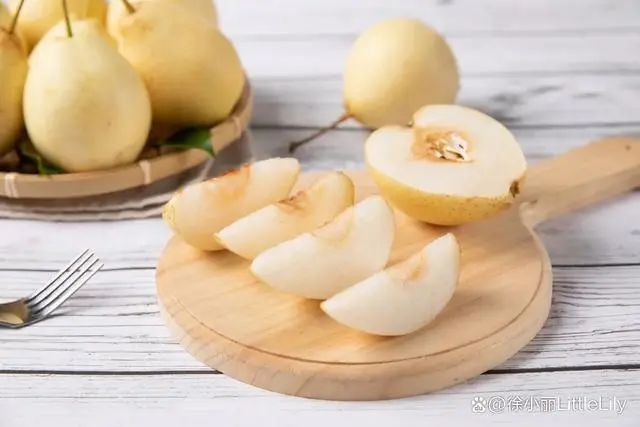
This is a good time to eat pears. Raw pears can relieve symptoms such as dry throat, itchiness, pain, hoarseness, constipation, and red urine in patients with upper respiratory infections; cooked pears can moisten the lungs and transform phlegm for those with a hot constitution and dry throat.Luobo (Radish)
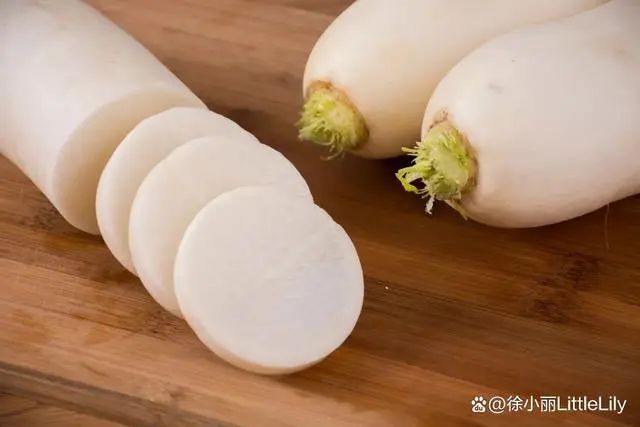
Radish is referred to as Lai Fu in medical texts. According to “Ben Cao Cong Xin”, Lai Fu “can break qi and eliminate phlegm”; Li Shizhen stated it can “stop coughing and eliminate phlegm”. Commonly, radish is used in households mixed with jellyfish as a side dish. Its seeds, known as Lai Fu Zi, are specifically used for phlegm transformation and digestion. Lai Fu Zi can also treat chronic bronchitis, expelling phlegm and mucus. If made into a soup, children can expel phlegm through their stools, which may contain thin mucus. For patients with pulmonary tuberculosis, if there is thick, sticky phlegm in the throat that is difficult to expel, they can mash radish, filter the juice, and drink a cup. Radish has a spicy flavor that can stimulate the trachea, helping to expel accumulated phlegm. Alternatively, Lai Fu Zi can be combined with mint leaves and a little rock candy to make a tea, which also has this effect.
TCM methods for treating “phlegm” recommend nine methods for phlegm elimination:
1. Drying Dampness and Transforming Phlegm
The spleen prefers dryness and dislikes dampness. If spleen yang is insufficient, water and dampness can stagnate, leading to damp phlegm. Symptoms include chest and abdominal fullness, fatigue, cough, white, clear, and thin phlegm, poor appetite, and a thick, greasy tongue coating.
Treatment should focus on strengthening the spleen and drying dampness. Common herbs include Cang Zhu (Atractylodes), Bai Zhu (White Atractylodes), Ban Xia (Pinellia), Fu Ling (Poria), Hou Po (Magnolia Bark), and Chen Pi (Dried Tangerine Peel). The formula Er Chen Tang (Two Aged Decoction) can be modified for this purpose. For those with significant heat, Huang Qin (Scutellaria) and Dan Shen (Salvia) can be added; if there is concurrent qi deficiency, Liu Jun Zi Tang (Six Gentlemen Decoction) is appropriate; if there is blood deficiency, Jing Yue Jin Shui Liu Jun can be used.
2. Regulating the Lungs and Transforming Phlegm
The lungs govern respiration and are responsible for the regulation of fluids. If lung qi is deficient, it cannot properly distribute fluids, leading to phlegm accumulation in the lungs. Chen Xiuyuan stated, “Whenever there is a deficiency in any of the five organs, it can lead to fluid retention.” This indicates that a deficiency in organ qi is an internal condition for phlegm accumulation. Therefore, treatment often follows the principle of “using warming herbs to harmonize” as stated in the “Jin Kui”. Common herbs include Xi Xin (Asarum), Gan Jiang (Dried Ginger), and Ban Xia (Pinellia). Formulas like Shen Su Wen Fei Tang or Ling Gan Wu Wei Jiang Xin Ban Xia Tang can be used.
As for phlegm caused by qi stagnation, which leads to obstructed breathing, chest and rib fullness, a tendency to sigh, and mental unrest, it may even lead to mental disorders; or if there is a sensation of a lump in the throat that cannot be swallowed or expelled; or accompanied by poor appetite, rib fullness, abdominal distension, dry belching, and a white greasy tongue coating. Common herbs include Ban Xia (Pinellia), Xiang Fu (Cyperus), Yu Jin (Curcuma), Hou Po (Magnolia Bark), Chai Hu (Bupleurum), Gua Lou (Trichosanthes), Zhi Ke (Bitter Orange), Xuan Fu Hua (Inula), Fu Ling (Poria), and Su Ye (Perilla). Formulas like Si Qi Tang, Wen Dan Tang, and Ti Tang can be used to regulate qi and relieve stagnation, allowing qi to flow and phlegm to dissipate.
3. Treating the Kidneys to Transform Phlegm
The kidneys store the original yin and yang. The generation of phlegm can occur due to water overflowing as phlegm or boiling water as phlegm.
The former is due to kidney yang deficiency, which cannot control water, leading to water flowing as phlegm. This phlegm is typically clear and thin, resembling water, and is accompanied by symptoms of yang deficiency. Common herbs include Fu Zi (Aconite), Rou Gui (Cinnamon), Ba Jiao (Morinda), Xian Mao (Curculigo), Xian Ling Pi (Epimedium), Hu Lu Ba (Trigonella), and Guo Sui Bu (Dipsacus). Treatment can include Kidney Qi Pills with Wu Wei Zi (Schisandra) to warm the kidneys and control water to eliminate phlegm.
The latter is due to yin deficiency causing fire to move, boiling water in the kidneys, leading to phlegm that is thick and white like foam, accompanied by symptoms of yin deficiency. Treatment can include Zhi Bai Di Huang Tang, or adding Dong Chong Xia Cao (Cordyceps), He Tao Ren (Walnut), Nu Zhen Zi (Ligustrum), Han Lian Cao (Eclipta), and Sang Shen (Mulberry). This type of kidney deficiency leading to phlegm has its manifestation in the lungs and its root in the kidneys, thus treatment should focus on “nourishing the water master and benefiting the fire source”.
4. Clearing Heat and Transforming Phlegm
For phlegm caused by heat stagnation, the lungs lose their ability to clear and descend, leading to cough with reversed qi, flushed face, dry throat, and phlegm that is difficult to expel, appearing yellow and thick, or like fine powder, with a wiry and rapid pulse, and a thin yellow tongue coating. If caused by wind-heat attacking the lungs, there may also be symptoms of fever and chills; if liver fire invades the lungs, there may be pain in the ribs during coughing.
For the former, treatment focuses on the lungs, commonly using herbs like Huang Qin (Scutellaria), Sang Bai Pi (Mulberry Bark), Gua Lou (Trichosanthes), and Ju Hong (Tangerine Peel), with formulas like Qing Qi Hua Tan Wan modified; for the latter, treatment focuses on the liver, commonly using herbs like Shan Zhi (Gardenia), Qing Dai (Indigo), and Huang Qin (Scutellaria), with formulas like Xie Bai San combined with Dai Ge San modified. Clinically, for lung heat phlegm accumulation, fever, constipation, and even mental confusion, using Meng Shi Gun Tan Wan or combining Da Huang (Rhubarb) and Huang Lian (Coptis) can also be effective. If due to liver and gallbladder fire stagnation, boiling fluids into phlegm, leading to mania, Huang Lian Wen Dan Tang combined with Huang Qin, Zhi Zi (Gardenia), Da Huang, and Yu Jin can often alleviate the condition; followed by Bai Jin Wan combined with heat-clearing, phlegm-transforming herbs to consolidate the effect.
5. Moistening Dryness and Transforming Phlegm
The lungs are harmed by dry pathogens, leading to the boiling of fluids into dry phlegm. This phlegm is typically thick and difficult to expel, or fine like silver threads, or may contain blood, with chest pain, dry throat; or low fever, tidal fever, dry stools, red and dry tongue, with little or thin yellow coating, and a fine rapid pulse. Cheng Zhongling stated: “Dry phlegm is difficult to expel, often arising in the lungs; if the lungs are dry, they must be moistened.” Therefore, moistening dryness and transforming phlegm focuses on the lungs, commonly using herbs like Sha Shen (Glehnia), Mai Dong (Ophiopogon), Shi Hu (Dendrobium), Tian Dong (Asparagus), Yu Zhu (Polygonatum), Zhi Mu (Anemarrhena), Sang Bai Pi (Mulberry Bark), Bai He (Lily), Hua Fen (Pollen), Bai Bu (Stemona), Gua Lou (Trichosanthes), and Bei Mu (Fritillaria), with formulas like Bei Mu Gua Lou San modified, or Sha Shen Mai Men Dong Tang modified. Based on the experience of predecessors, “bitter cold can be used for heat, sweet cold must be used for dryness; heat stagnation can be released, dryness must be nourished”; thus, when treating dryness, it is essential to distinguish between bitter cold and sweet cold, as misusing bitter cold can exacerbate dryness and harm yin. Adding phlegm-transforming herbs to moistening herbs is just right.
6. Extinguishing Wind and Transforming Phlegm
Heat phlegm rising can provoke liver wind, often seen in children. Because their liver is often excessive and their spleen is often insufficient, they are prone to phlegm, commonly seen with high fever, confusion, convulsions, and phlegm sounds in the throat, coarse breathing, and a yellow greasy tongue coating. Use Hui Chun Dan combined with She Dan Chen Pi powder every two hours in moderation, and once the heat subsides and convulsions stop, further regulation can be done. In older individuals with kidney and liver yin deficiency, qi and blood rising, phlegm and fire accumulation, symptoms may include dizziness, flushed face, tremors in hands and feet, drooling, eyelid twitching, irritability, wiry slippery pulse, and red tongue. Commonly used herbs include Ling Yang Gou (Antelope Horn) and Tian Zhu Huang (Bamboo Juice) combined with Dan Shen (Salvia), Huang Qin, and fresh Zhu Li (Bamboo Juice) to extinguish wind and transform phlegm, stabilizing phlegm and calming wind, followed by nourishing liver and kidney herbs for treatment.
7. Digesting Food and Transforming Phlegm
The spleen receives food and fluids, distributing them to nourish the body, which is a physiological norm. If the spleen fails to transport and transform, food stagnation can lead to phlegm. “Bi Hua Yi Jing” states: “Phlegm accumulation is due to food accumulation… at the onset, both pulses are wiry, and the abdomen gradually becomes distended and soft; urgently use Liu Jun Zi Tang combined with Hou Po, Mai Ya, and Lai Fu Zi to resolve it.” Clinically, food phlegm stagnation can lead to both lung qi obstruction, causing cough and phlegm, and abdominal distension with loose stools containing undigested food residues. Treatment must focus on strengthening the spleen and stomach, resolving food stagnation to transform phlegm, commonly using herbs like Hou Po (Magnolia Bark), Cang Zhu (Atractylodes), Shen Qu (Fermented Wheat), and Lai Fu Zi (Radish Seed), with formulas like Ping Wei San modified, which can often achieve the goal of digesting food and transforming phlegm.
8. Softening Hardness and Transforming Phlegm
Clinically observed phlegm nodules and lymphatic swellings are often caused by liver and gallbladder qi stagnation and phlegm turbidity accumulation, developing slowly over time, making treatment difficult to achieve quickly. Therefore, treatment should focus on gradual dispersal and resolution. In the herbs used for resolving stagnation and transforming phlegm, it is often necessary to combine liver-regulating and qi-moving herbs, such as Bei Mu (Fritillaria), Hai Zao (Sargassum), Kun Bu (Kelp), Xia Ku Cao (Selfheal), and Yu Jin (Curcuma), with formulas like Xiao Luo Wan modified. Additionally, if there is kidney deficiency, combined with wind-cold invasion, leading to phlegm turbidity accumulation, flowing into the muscles and bones, forming lumps that do not rupture or dissipate, and ineffective with heat-clearing and detoxifying herbs, one should warm the meridians and open the collaterals to transform phlegm, commonly using Yang He Tang modified, which can be quite effective if the herbs match the symptoms.
9. Opening Orifices and Transforming Phlegm
Clinically, any condition where phlegm causes obstruction of the clear orifices, leading to mental unrest, can be differentiated into excess dampness and heat, with distinctions between deficiency and excess. If due to damp phlegm obstructing the orifices, leading to mental confusion, slurred speech, and phlegm sounds, first use Su He Xiang Wan, followed by Dao Tan Tang combined with Chang Pu, Yu Jin, and Yuan Zhi to calm the mind and open the orifices. If due to kidney yin deficiency and liver yang excess, leading to sudden fainting and loss of consciousness, convulsions, flushed face, and cold feet, use Di Huang Yin Zi or Niu Huang Wan, or Zhi Bao Dan combined with Bei Mu to nourish water and control fire, opening the orifices and transforming phlegm. If due to yangming heat excess, with stomach heat severely burning lung qi, leading to lung and stomach heat excess, heat phlegm obstructing the lungs, coarse breathing, mental confusion, and chaotic speech, treatment should focus on clearing heat, opening the orifices, and transforming phlegm, using Wu Ju Tong combined with Niu Huang Cheng Qi Tang with fresh Zhu Li for rapid effect. The above treatment methods are used in emergency situations; once the patient is revived, further treatment should be adjusted based on the condition for optimal recovery.
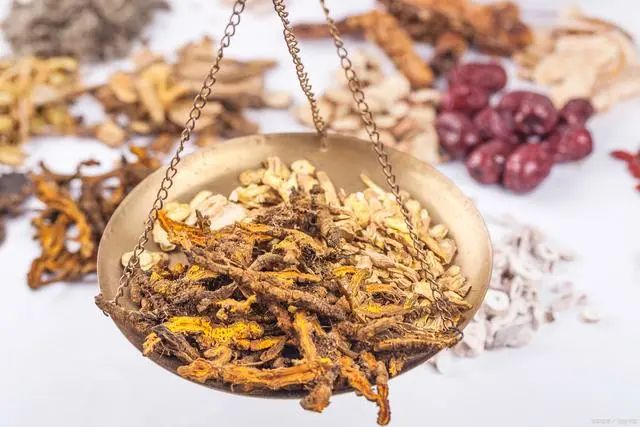
Methods for treating phlegm have been extensively discussed by predecessors, and clinically can be divided into phlegm transformation, phlegm elimination, and phlegm cleansing, which are concise and to the point, easy to grasp, and effectively address the key aspects of phlegm treatment. The key points for selection are: generally use phlegm transformation methods, for more severe cases use phlegm elimination methods, and for retained phlegm use phlegm cleansing methods.
There are many discussions on the herbs for treating phlegm; the summary in “Jing Yue Quan Shu” regarding the use of herbs for phlegm syndromes is quite systematic and beneficial for clinical practice.
Methods for treating phlegm
1. Phlegm Transformation Method
Phlegm transformation is the method of gradually resolving phlegm. There are methods for dispersing lung phlegm, clearing heat phlegm, drying damp phlegm, and tonifying phlegm.
The lung phlegm dispersing method is used for colds caused by cold pathogens, cough with abundant phlegm, combining warming phlegm and dispersing lung pathogens, with representative formulas like Xing Su San and Xiao Qing Long Tang.
The heat phlegm clearing method is used for colds caused by wind-heat, lung heat, and dryness with abundant phlegm, combining clearing heat and transforming phlegm with lung moistening, with representative formulas like Sang Ju Yin and Sang Xing Tang.
The drying damp phlegm method is used for phlegm caused by spleen dysfunction and damp stagnation, combining qi-regulating phlegm transformation with drying dampness and harmonizing, with representative formulas like Er Chen Tang.
The tonifying phlegm method is used for phlegm syndromes due to spleen or kidney deficiency. For phlegm caused by spleen deficiency, the method of strengthening the spleen and transforming phlegm is used, with representative formulas like Liu Jun Zi Tang; for phlegm due to kidney yin deficiency, the method of nourishing water and combining phlegm-transforming herbs is used, with representative formulas like Liu Wei Wan combined with Er Mu Wan; for phlegm due to insufficient fire, the method of benefiting the fire source and combining phlegm-transforming herbs is used, with representative formulas like Jin Kui Shen Qi Wan combined with Chen Pi and Bai Zhu.
2. Phlegm Elimination Method
Phlegm elimination is the method of forcibly removing difficult-to-transform phlegm, including phlegm elimination and qi descending methods, phlegm elimination and stomach calming methods, and phlegm elimination and softening methods.
The phlegm elimination and qi descending method is used for cough with abundant phlegm or phlegm accumulation, combining phlegm elimination with qi descending, with representative formulas like San Zi Yang Qin Tang and Hou Zao San (Monkey Zao, Antelope Powder, Calcined Green Stone, Agarwood, Borax, Tian Zhu Huang, Chuan Bei Mu, Musk).
The phlegm elimination and stomach calming method is used for phlegm caused by dampness and food, combining phlegm elimination with stomach calming, with representative formulas like Ping Wei San. For dampness, add Chen Pi and Ban Xia; for alcohol accumulation, add Zhi Ke and Ge Hua; for food stagnation, add Shan Zha, Shen Qu, Mai Ya, and Lai Fu Zi. The phlegm elimination and softening method is used for phlegm nodules, lumps, and similar conditions, combining phlegm elimination with softening and dispersing, with representative formulas like Xiao Luo Wan and Xiao Pi A Wei Wan.
3. Phlegm Cleansing Method
Phlegm cleansing is the method of searching for and eliminating difficult-to-dissolve phlegm, including phlegm expulsion methods, phlegm washing methods, and phlegm searching methods.
The phlegm expulsion method is used for phlegm accumulation above the diaphragm, such as in cases of mania, using San Sheng San to induce vomiting; for food phlegm, use salt soup to induce vomiting; for throat wind, use Xi Xian San to expel phlegm.
The phlegm washing method is used to attack and eliminate phlegm in the chest and abdomen. For phlegm in the chest, use Kong Yan Dan to wash it away; for phlegm in the abdomen, use Gun Tan Wan to wash it away.
The phlegm searching method is used for phlegm obstructing the meridians. For bi syndrome with phlegm obstructing the meridians, use Xiao Huo Luo Dan; for wind-cold phlegm obstructing the meridians, use San Sheng Yin to search for phlegm.
Experience with phlegm treatment
1. Selecting herbs based on location
If phlegm is in the limbs, only Zhu Li can reach it; if phlegm is under the ribs, only Bai Jie Zi can eliminate it; if phlegm is in the skin and membranes, only ginger juice and Zhu Li can reach it.
If phlegm nodules are in the throat and cannot be expelled, add salty herbs to the phlegm-transforming herbs to soften the hardness, such as Gua Lou Ren, Xing Ren, Hai Fu Shi, Pu Xiao, and Hai Zao, combined with ginger juice.
Zhu Li and Jing Li combined with ginger juice are most effective for meridian phlegm. Zhu Li guides phlegm, and without ginger juice, it cannot travel through the meridians; Jing Li treats phlegm quickly and can be used by those who can eat it.
2. Selecting herbs based on etiology
Heat phlegm and fire phlegm should use Qing Dai, Huang Qin, Tian Hua Fen, Lian Qiao, and Shi Gao… old phlegm should use Hai Fu Shi, Gua Lou, and Bei Mu, with concurrent fire and hardness treated with Jie Zhai Hua Tan Wan; solid phlegm and fire phlegm should use Gun Tan Wan, but should not be overused; wind phlegm should use Nan Xing and Bai Fu Zi; damp phlegm should use Cang Zhu, Bai Zhu, Ban Xia, Fu Ling, and Ze Xie; food accumulation phlegm should use Shen Qu and Shan Zha; alcohol phlegm should use Tian Hua Fen, Huang Lian, Bai Zhu, and Shen Qu, or Wu Ling San and Si Ling San for diuresis. Phlegm due to insufficient qi should use Ren Shen and Bai Zhu, and for internal injury with phlegm, Ren Shen, Huang Qi, and Bai Zhu should be used, often with ginger juice for delivery, or combined with Ban Xia and Fu Ling.
3. Characteristics of phlegm treatment herbs
For phlegm containing blood, add Jiu Juice; Hai Fen can clear heat phlegm, dry damp phlegm, soften hard phlegm, and eliminate stubborn phlegm, and can be used in pills or decoctions; Nan Xing and Ban Xia treat wind phlegm and damp phlegm; Shi Gao is extremely effective for heavy phlegm fire, Huang Qin treats heat phlegm and assists its downward movement; Zhi Shi can treat phlegm with the ability to push against walls; Wu Bei Zi can treat old phlegm, combined with other herbs for stubborn phlegm, which is not widely known; Tian Hua Fen is most effective for heat phlegm and alcohol phlegm, also known for treating heat phlegm above the diaphragm; Xuan Ming Fen is effective for heat phlegm and old phlegm, quickly lowering fire and softening hardness; Nao Shi and Meng Shi can greatly eliminate phlegm accumulation, lowering phlegm fire, ground into fine powder and mixed with white sugar… very effective; Cang Zhu treats phlegm accumulation, and is extremely effective for phlegm combined with blood stasis, such as in Shen Shu Wan.
▲
— THE END —
The leadership has spoken
Give a thumbs up 
and my salary will increase by 50 cents!
Contact Us
Phone: 13698610201QQ: 447046919WeChat: injinanLike + Viewto start your daily good luck


